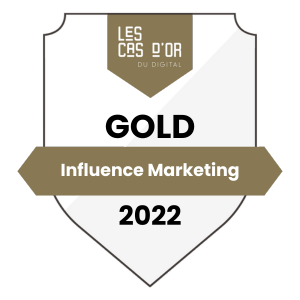What is ROI?
At its core, ROI represents the relationship between the cost of a campaign and the benefits it generates. Traditionally, ROI is calculated as follows:
ROI = (Net Profit / Total Cost) × 100
For instance, if a campaign costs $10,000 and generates $15,000 in profit, the ROI would be 50%. This formula helps brands determine if their investment was worthwhile.
However, influencer marketing often involves non-monetary gains, such as increased brand awareness or enhanced customer engagement. In these cases, ROI can also include metrics like:
Earned Media Value (EMV): The equivalent cost of media coverage generated by influencer content.
Engagement Metrics: Likes, comments, shares, and other interactions.
Brand Sentiment: How positively (or negatively) your brand is perceived.
Why is ROI important in influencer marketing?
ROI isn’t just a number; it’s a decision-making tool. By understanding ROI, brands can:
Assess Campaign Performance
Determine which influencers or platforms deliver the best results.
Identify high-performing content types.
Optimize Budgets
Allocate resources to campaigns with the highest returns.
Avoid wasting money on underperforming strategies.
Demonstrate Value to Stakeholders
Justify marketing expenses to decision-makers.
Build confidence in influencer marketing as a viable channel.
Challenges in measuring ROI for influencer campaigns
While calculating ROI sounds straightforward, influencer marketing presents unique challenges:
Attribution Issues
How do you attribute sales to a specific influencer? Tracking tools like affiliate links or UTM parameters can help, but results may still be unclear.
Non-Monetary Gains
Brand awareness and audience trust are harder to quantify but crucial for long-term success.
Time Lag
Some benefits, such as increased brand loyalty, may take time to materialize.
Best practices for measuring ROI in influencer marketing
To overcome these challenges and get a clearer picture of ROI, consider these tips:
Set Clear Objectives: Define what success looks like before launching your campaign. Are you aiming for sales, engagement, or awareness?
Use Trackable Links and Codes: Provide influencers with unique links or discount codes to track conversions.
Leverage Analytics Tools: Platforms like Google Analytics and social media insights can help measure the impact of campaigns.
Combine Metrics: Look at both monetary returns and intangible benefits to get a holistic view of ROI.
Key takeaways
When measuring ROI in influencer marketing, keep in mind:
It’s not just about dollars and cents. Non-monetary gains like brand loyalty and awareness are equally important.
Use the right tools and metrics to attribute success accurately.
Focus on long-term value, not just immediate returns.
By understanding and applying ROI effectively, you can ensure your influencer marketing efforts are both impactful and cost-efficient.









